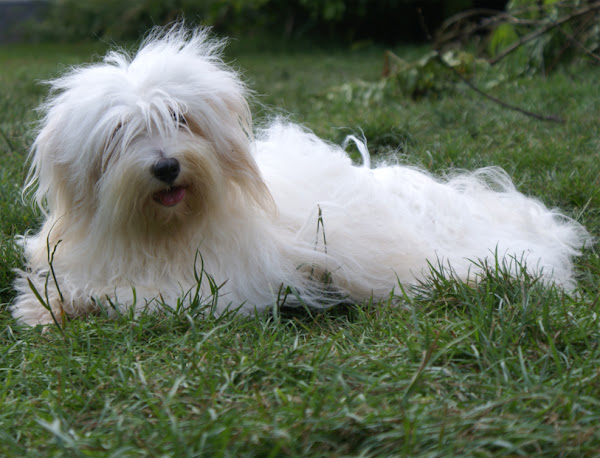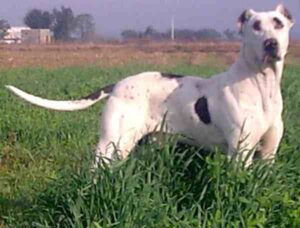The Coton de Tulear dog is a small breed of dog which is named for the city of Tuléar (also known as Toliara) in Madagascar. It is a very beautiful breed and smaller in size. It is also known by some other nicknames such as Coton and Cotie.
The Coton de Tulear breed is thought to have originated from a group of small white dogs who swam across the Malagasy channel following a shipwreck.
The breed is known for it’s cotton-like coat. They are smaller in size and white in coloration, sometimes with gray, black or tri-colored markings.
The Coton de Tulear dog breed was developed on the island of Madagascar and is still the island’s national dog. It is believed that the Tenerife dog was brought to Madagascar and mated with a dog of the island, creating an unexpected result.
The breed’s ancestors were possibly brought to Madagascar in the sixteenth and seventeenth centuries aboard pirate ships.
Actually Madagascar was a haven for pirates and pirate graveyards can still be seen there. Pirates established a base on St. Mary’s Island, Madagascar and some of them took Malagasy wives.
The Coton is of the Bichon dog type, linked most closely to the Bichon Tenerife and the Tenerife Terrier. There have been many stories circulating about the history of the Coton in recent years, most of them untrue.
The Coton de Tulear was never feral on Madagascar. It did not hunt wild boar or alligators, as its size, strength, and demeanor can disprove easily. It was a companion dog of the Merina (the ruling tribe) in Madagascar. It has very little prey drive and is not a hunting dog.[1]
The Coton de Tulear dog breed is not yet recognized by the AKC (American Kennel Club). But it is registered with the AKC’s Foundation Stock Service (FSS), as well as the United Kennel Club and Europe’s Federation Cynologique Internationale (FCI).
Coton de Tulear Dog Characteristics
The Coton de Tulear dog is smaller in size, but is very beautiful. It is known for it’s cotton-like coat. It is mainly white, but sometimes with gray, black or tri-colored markings.
The breed has very soft voluptuous hair (as opposed to fur), comparable to a cotton ball. It has a prominent black nose, large expressive eyes, and somewhat short legs. It’s tail should curl over it’s back.
The Coton de Tulear has a medium-to-long, fluffy, cotton-like coat that is considered hair rather than fur. It is a non-shedding breed with low dander and is considered hypoallergenic. When it is a puppy, it may shed its puppy coat.
Average body height of the mature dog is between 9.8 to 11.8 inches at the withers for males, and between 8.7 and 10.6 inches for the females. Average live body weight of the mature dog is between 4 and 6 kg for the males, and between 3.5 and 5 kg for the females.

Temperament
The Coton de Tulear dogs are affectionate, intelligent and playful breed. They can become very vocal, although they are generally quiet. They generally do barking, grunting and making other noises when having fun.
They are known to have a habit of jumping up and walking on their hind legs to please people. Most of the dogs love meeting new people and are very curious in new situations.
The Coton de Tulear dogs are generally easy to train, as they are very eager to please. They love to swim, run and play. They adapt well to any kind of living environment.
Lifespan
Average lifespan of the Coton de Tulear dog is between 14 and 19 years.
Feeding
How much a mature dog eats depends on it’s size, age, build, metabolism and activity level. Dogs are individuals, just like people, and they don’t all need the same amount of food.
The Coton de Tulear dog is small in size and it is moderately active. So, it’s diet should be formulated for a small breed with average to low exercise needs.
Generally, 1 cup of high quality dry dog food will be enough for them. Although, you can consult with a vet in your area for better feeding recommendations.
Caring
Taking good care of the animals is very important for raising Coton de Tulear dogs. You should always keep up with your dog’s regular veterinary checkups to detect any health concerns early. Your vet will be able to help you develop a caring routine that will keep your dog healthy.
The Coton de Tulear is a hardy dog and it enjoys playing in all types of weather, including snow and rain. But these dogs should always live indoor with their people.
The breed is well-suited to living in any environment, from apartments to ranch houses. But if it has a yard it should be fenced so it doesn’t wander off, or get stolen away by someone who admires it as much as you do.
The Coton de Tulear dogs take well to training, especially when it’s presented in a positive manner. Reward the dog with praise, play and treats, and let the dog know what a great job it has done. Remember that it’s goal is to please it’s master.
Some people find the Coton difficult to housetrain, but given a regular schedule, frequent outings to do it’s business, and praise when it potties in the right place, a Coton can pick it up very quickly.
Matted hair is common for this breed and should be removed through daily brushing and combing. Grooming the Coton de Tulear dog can be quite a challenge. This breed does not have the common “doggie smell” and, when properly bathed and groomed, has little to no odor.
Health
The Coton de Tulear dogs are generally healthy. But like all other dog breeds, they are also prone to certain health conditions.
Their common health problems include hip dysplasia, luxating patellas and progressive retinal atrophy. Always try to keep good contact with a vet in your area.
| Breed Name | Coton de Tulear |
| Other Names | Also known by some other nicknames such as Coton and Cotie |
| Breed Size | Small |
| Height | Between 9.8 to 11.8 inches at the withers for males, and between 8.7 and 10.6 inches for the females |
| Weight | Between 4 and 6 kg for the males, and between 3.5 and 5 kg for the females |
| Good as Pets | Yes |
| Climate Tolerance | All climates |
| Color | Generally white (sometimes with tan markings), black and white and tricolor |
| Lifespan | Between 14 and 19 years |
| Good for Children | Yes |
| Rarity | Common |
| Country/Place of Origin | Madagascar |






